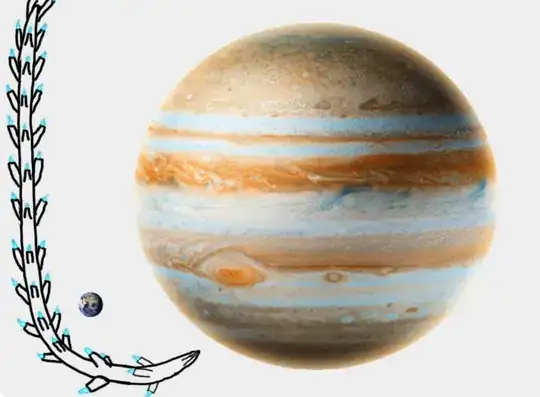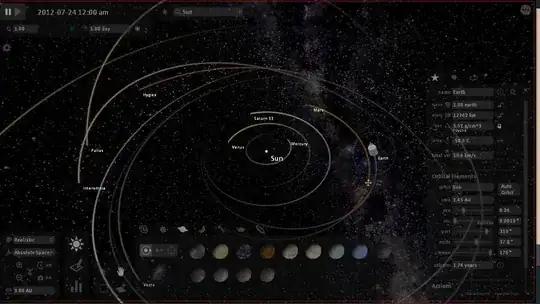So basic introduction: my world has things which naturally should never exist due to seemingly violating certain laws we deem as natural, for this, let's just call them "anomalies". Among these various creatures lies one of the most troublesome, simply because it's proportions may most certainly represent a threat.
The creature in question is a space-faring, serpentine-like being that's seemingly made of a singular type of tissue that's borderline indestructible, and sustains itself through strange organs inside of itself which provide both the energy it needs to survive and the propulsion mechanisms it needs to travel through space.
For a more exact description of the thing: It's length is approximately 250000 km, it weights around $6,25 \times 10^{26}$ kg and its cruising speed through the solar system is constant and equal to ~320000 km/h (~89 km/s). In case it's important, the tissues its made of have a density of roughly 100000 $kg/m^{3}$, and its weight is distributed fairly equally throughout its body.
Here's a crude drawing of the being near earth and Jupiter to better illustrate: 
In the current moment of the story, this being has come closer to our solar system, and, for plot reasons, I wanted it to get as close to earth as possible without outright destroying the planet.
Now, the main problem started to appear when I went to research on the effects of such a thing existing and how it'd interact with nearby celestial bodies (I was having problems picturing the effects of such an astronomical creature in the solar system, and I am no expert in astronomy or the physics involving celestial bodies and planetary masses). I was fairly unsuccessful in understanding how it's own gravity would work, assuming it's mass would still be enough to generate a noticeable gravitational pull despite its shape. I did however find some worrying side effects of its large size and mass while looking for questions with similar themes on this SE, such as that the creature's sheer mass and potential gravity might cause it to shatter the earth's crust simply by getting too close, temporarily mess with the orbits of some planets and even risk causing the moon to be "slingshot" away, unless I got something wrong in what I've read.
So summing it up, because asking about its effects on the solar system would be too broad, what's the closest such a creature could get from Earth before it started to cause serious risks to the planet's integrity? Besides its nigh indestructible body and seeming violation of the laws of thermodynamics, the creature conforms to all known laws of physics.
Answers which also include the effects of it getting too close and whether its long form would cause any major changes to its roche limit, if at all, would be greatly appreciated, as understanding how it's own gravitational forces manifest in its non-spherical body are my main problem right now .
If I've missed any important details or failed to clarify something, please let me know so that I can fix these problems.
 ][1
][1